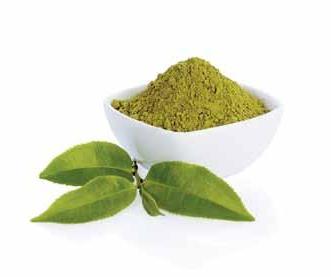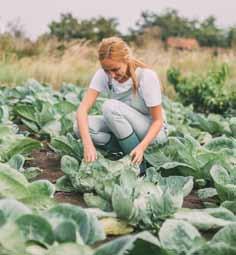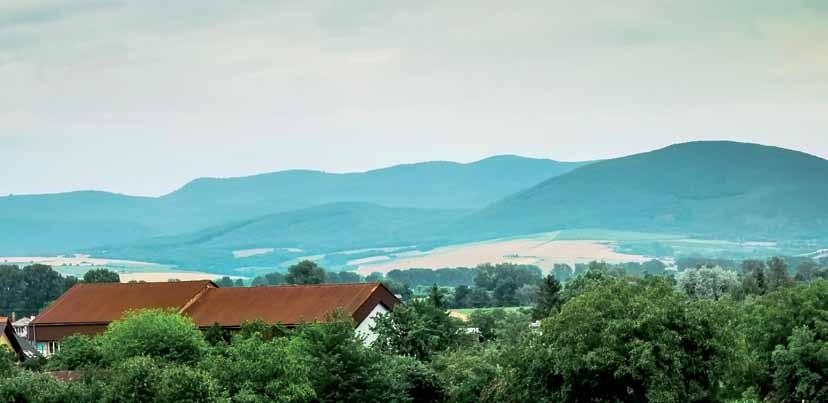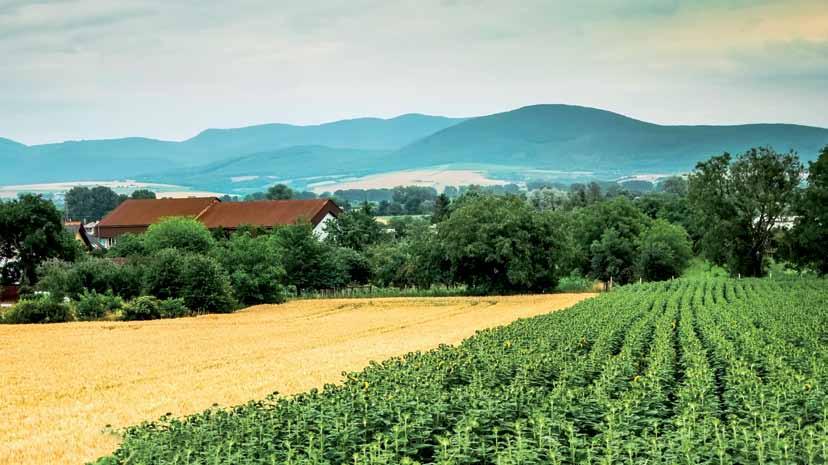
22 minute read
health briefs
in a study with important implications for underfed children in low-income countries and elsewhere, a new study in The bmJmedical journal found that six months of nutritional supplements can improve working memory and blood flow in children’s brains. Researchers from Tufts university travelled to villages in guinea-bissau, West Africa, where they gave 1,059 children, ages 1 through 7 years, a breakfast supplement high in plant polyphenols, omega-3 fatty acids, vitamins, minerals and protein. They compared results with children eating the standard local breakfast of rice or a common lowerquality supplement. They found that the enhanced nutritional supplement boosted cognition and increased cerebral blood flow in children younger than 4 and raised their hemoglobin concentration if they were anemic. Children older than 4 had improved body compositions—more lean tissue and less fat. With at least 250 million children worldwide younger than 5 that are failing to reach their cognitive developmental potential, these results pose significant impacts for children’s education and national development in low-income countries, say the researchers.
Advertisement
use Colored lED lights to Relax
getting an mRi or CT scan is typically not a relaxing experience, and patient discomfort, anxiety or agitation can affect the quality of the image. Taking note of businesses that use lighting to create a mood, researchers from Pepperdine university demonstrated that patient unease in imaging centers can be modified with the use of colored lED lights. in a pilot study involving 35 subjects, 43 percent found blue lighting most relaxing, while 31 percent preferred yellow. The least relaxing lighting color was red, according to 69 percent of participants, followed by yellow (17 percent) and green (11 percent). Each subject was given a handheld device to set the hue, intensity and brightness of lighting, and most chose blue. No patient preferred the standard bright, white lighting of healthcare environments. “When given the opportunity to change a single aspect of the environmental or imaging facility experience, patients feel much more in control of the otherwise unfamiliar and uncomfortable setting,” write the authors in the Journalof medical internetResearch.
use green Tea Extract and Curcumin to Ward Off Oral Cancer

Early signs of oral cancer can include white patches, sores and lumps inside the mouth, biomarkers known collectively as oral potentially malignant disorders (OPmD). To see if two natural chemopreventive agents—green tea extract and curcumin— could reverse these conditions, researchers in india tested 60 people with OPmD, splitting them into three groups. One group was given 400 milligrams (mg) of green tea extract in a capsule, as well as a gel; a second group was given 475 mg of curcumin; and the third received a combination of the first two treatments. After 12 weeks, researchers found that the supplementation had significantly reduced OPmD biomarkers in all three groups, with particularly strong results in the combination group, suggesting a synergistic effect.

Try mindfulness to improve Cardiovascular Health


mindfulness training can lower blood pressure and positively influence behavior that promotes cardiovascular health, report brown university researchers. The study published in PlosOne involved 43 people with hypertension. in eight weekly 150-minute sessions, participants learned mindfulness meditation movements and techniques, including eating food mindfully, while also receiving instruction on hypertension risk factors. by the end of the year, they reported improvements in stress levels, diet, physical activity and alcohol consumption. On average, systolic blood pressure fell by six points and diastolic pressure by one point, a small, but significant improvement.

Try ginger to lower Diabetes markers
ginger root (Zingiberofficinale), used historically in traditional medicine to treat indigestion and nausea, may also help people with Type 2 diabetes, suggests a new study from brazil. Researchers conducted a randomized, double-blind study of 103 people with Type 2 diabetes that were taking medications. Those taking 1.2 grams of ginger powder for 90 days experienced a significant drop in the level of fasting blood sugar, total cholesterol and lDl cholesterol compared to those taking a placebo. Capstone Medical Associates is a medically based wellness center that uses evidence based medicine to provide traditional, alternative & complimentary therapies to improve the quality of life of all our patients. Services include treatment of: • cancer • fatigue • mitochondrial dysfunction • weight management • hormone imbalance

Immune enhancing treatment & complimentary cancer therapy with IV Vitamin C.
Call to schedule your appointment today !
4807 Jonestown Rd • Suite 141 • Harrisburg, PA 717-695-6177 • CapstoneMedicalAssociates.com
Get Healthy and Stay Healthy with Nutrition Response Testing
Nutrition Response Testing is a non-invasive system of analyzing the body to determine the underlaying cause of ill or non-optimum health. The procedure is simple and direct and so precise that it opens the door to a safe and lasting recovery, even in the cases where everything else has failed.

We help people get well without the use of surgery and drugs using the body’s own biofeedback. Rachel DiScala
ND, LMT, CNHP 3608 St Lawrence Ave | Reading, PA 19606 610-370-4343 | DayStarNatural.com
Gaining the proper understanding and evaluation of the trifecta of health and well-being
Restoring the Foundations of Your Health & Well-being
• Biochemical-nutritional • Structural • Neuro-emotional
Integrating all three areas to bring the whole you back into balance for the optimal state of health and vitality!
Dr. Heath is trained in cutting edge techniques to restore brain and body balance.
HEATH
WELLNESS CENTER
Functional, Integrative Brain-Body Wellness
Call today! 717-530-5555
Dr. Thomas Heath DC PAK
We use advanced technologies that are safe and natural to find the cause of your problem.
The Promise of Regenerative Organic Farming
by Sandra Yeyati
With its dependence on chemical pesticides and fertilizers, heavy tilling techniques, concentrated animal feeding practices and mono-crops—all designed to maximize yields—conventional farming has come at a great cost. “Conventional intensive farming practices have significant negative consequences for the land and surrounding ecosystems,” says Richard Teague, Texas A&M professor of Ecosystem Science and Management. “By disrupting the natural function of these habitats, the valuable ecosystem services they provide are compromised.”

The way we’re growing food now is not sustainable. “According to the United Nations, we only have 60 harvests left before our soil is completely depleted. Years of conventional industrial agriculture have drained the soil dry of all of the organic matter, all the microbes, that microbiome that brings nutrients to our plants and to our planet as a whole,” says Margaret Wilson, content creation and media relations specialist at the Rodale Institute.
The UN also reported last year that agriculture and forestry were responsible for nearly a quarter of all greenhouse gas emissions. “Agriculture is a climate-intensive process and conventional practices make that even worse because they’re fossil fuelintensive,” Wilson says. “They require a lot of machinery to plow fields and distribute pesticides. Fertilizers are fossil fuel-based. Tillage is a huge part of conventional agriculture, where you’re turning the soil over, and that releases carbon dioxide into the atmosphere.”
One third of the world’s land surface is considered desert, and according to Judith D. Schwartz, the Vermont author of The Reindeer Chronicles and Cows Save the Planet, most deserts are manmade. “If
we look historically, we learn that most deserts were once thriving grasslands or some other kind of ecosystem and became deserts after hundreds of years of poor grazing management or farming that was no longer putting nutrients back into the soil.”
The good news is that deserts can be brought back to life. In the state of Chihuahua, Mexico, where much of the land is degraded, ingenious ranchers have figured out a way to support healthy animals and plant biodiversity. “The ranchers were earning money by managing the livestock holistically in a way that was reviving the ecological function of these lands, so there were thick grasses, birds and butterflies flourishing right next to land that looked horrible—absolute deserts with a lot of erosion, the soil so depleted that it couldn’t hold water,” recalls Schwartz, who visited the area.
Regenerative organic farming holds great promise to rebuild soil, draw carbon from the atmosphere and ultimately grow healthier food. “When you take out the pesticides, fertilizers and intensive tilling, our farming systems trial concluded that regenerative organic agriculture uses 45 percent fewer fossil fuels and releases 40 percent fewer carbon emissions than conventional practices,” Wilson says, adding that a recent Rodale Institute white paper postulated that by transitioning all global crop and pastureland to regenerative management, we could sequester 100 percent of annual carbon dioxide emissions.
As the founder of the Rodale Institute, J.I. Rodale, said, “Healthy soil equals healthy food equals healthy people.” Soil restoration is job one, and we know how to do this. “The goal of regenerative farming is to farm and ranch in nature’s image,” says Gabe Brown, a North Dakota farmer and author of Dirt to Soil. He offers the following six principles to create a thriving, regenerating agricultural ecosystem:

1Context: “There’s a reason bananas do not grow in North Dakota. They don’t fit the context, whereas more spring wheat is grown in North Dakota than anywhere else. You have to farm and ranch in your context.”
2The least amount of mechanical and chemical disturbance possible:
“Nature tills with earthworms and burrowing rodents, but it certainly doesn’t till the soil like we do in farming or even in gardening. Tilling is the worst thing you can do if you want to raise nutrient-dense food. Nature aerates the soil with the use of living plants and soil aggregates. Those soil aggregates will only last about four weeks, then new ones need to be formed, and the only way to form them is by not tilling and allowing biology and fungi to secrete substances that help bind sand, silt and clay to form soil aggregates.”
HARMONIZE
YOUR HOME’S ENERGY
Enhance your health, prosperity & relationships with Feng Shui
SAVE with our NEW CLIENT discount through March 2021
Zententional-Living.space
ZententionalLiving@gmail.com
UPCOMING EVENTS

VISIT OUR STORE & VISITOR CENTER FREE AUDIO TOURS OF THE FARM AVAILABLE
Open Tuesday – Saturday, 10 AM – 3 PM
THE GLOBAL LEADER OF
REGENERATIVE ORGANIC AGRICULTURE
Our farm is an education destination full of beauty and nature. Visit today!
WORKSHOP
ORGANIC GARDENING 101
March 27 · 10 AM – 1 PM
Join us to learn the best practices for starting your plants from our organic experts.
ORGANIC PLANT SALE
April 2 & 3 · 10 AM – 4 PM
Purchase organic seedlings, compost, how-to books and more!
SAVE THE DATE
VISITOR CENTER OPEN HOUSE MARCH 27
SEE ALL EVENTS AT RODALEINSTITUTE.ORG
611 SIEGFRIEDALE ROAD, KUTZTOWN, PA 19530 610-683-1400
As we move out of winter and into the abundant months of spring, there are many ways to reconnect ourselves to food, farming and the planet. Rodale Institute, an organic farming nonprofit based in Kutztown, offers plenty of ways to get outside, get involved and get planting.
Rodale Institute Virtual Campus
is a new educational platform complete with online courses that are self-guided and never expire. Two courses are currently being offered. • Transition to Certified Organic: This course covers the organic certification process, topics such as soils, crops, livestock and marketing, and includes expertise from a wide array of certified organic farmers. • Hobby Beekeeping: Participants in this course will learn the basics of keeping a backyard honeybee hive, the equipment needed and about the current issues facing honeybees.
Farm Events
Rodale Institute’s events and workshops, taking place at their Kutztown headquarters, welcome attendees to learn more and get involved in the regenerative organic movement. The Organic Gardening 101 Workshop will take place from 10 a.m. to 1 p.m., March 27. Learn from Rodale Institute’s experts on topics like equipment, containers for indoor seed starting and much more.
Take pride in growing summer tomatoes, learn how to build up immunity, reduce disease and combat plant stress at Rodale Institute’s Tomato Grafting Workshop from 10 a.m. to noon, April 10. Participants will take home two grafted tomato plants.
Learn about backyard composting with the Compost Like a Pro workshop from 10 a.m. to noon, April 17. This class is designed for anyone who has wondered about composting at home and is looking for the right incentive and information.
Earth Day at the Farm is scheduled from 11 a.m. to 4 p.m., April 22. Join Rodale Institute staff for a day of volunteer service and experience a day of hands-on farm fun learning about the basics of regenerative organic agriculture.
Rodale Institute will also host two plant sales this spring, boasting a supply of organic vegetables, flowers, herbs and more for spring gardening. The plant sales will take place at Rodale Institute’s Kutztown campus from 10 a.m. to 4 p.m., April 2 to 3 and May 6 to 8.
Round Up at GIANT
Throughout the months of March through May, visit a GIANT grocery store in the area and “round up” to the nearest dollar when purchasing groceries to donate to nonprofits like the Rodale Institute that are working to heal people and the planet.

Pre-registration required for most events. For more information or to register for workshops, courses and events, visit RodaleInstitute.org/Events and RodaleInstitute.org/ Online-Courses. See ad, page 17. 3Armor on the soil:“Naturealwaystries tocoverthesoil,whetheritbeleaves inaforestordecayingplantsinapastureor field.Naturedoesnotlikebaresoil.”
4Diversity: “Where in nature do you see a monoculture? Usually only where man put it or man’s actions have driven it to be a monoculture. Nature is very diverse, so hundreds of different grasses, legumes all growing in harmony. We’ve gotten away from that. Now we plant monocultures. That’s not the way nature functions.”
5A living root being in the soil as long
as possible throughout the year: “I go out in the spring here in North Dakota, and you’ve got crocuses coming up through the snow. That’s nature’s way of trying to take the solar energy and all of these compounds out of the atmosphere, and through photosynthesis convert it into carbon to feed soil biology.”
6Livestock and insect integration:
“Nature does not function properly without animals. Too many people think we have to remove the animals from the landscape. That’s the worst thing you can


adolfo felix/Unsplash.com
do. What’s going to pollinate the plants? The way our rich soils were formed was with large herds of ruminants, grazing the plants. That plant, once grazed, starts sloughing off root exudates to attract biology, to regrow, and then that plant is able to cycle more carbon out of the atmosphere.”
Brown waxes poetic when he talks about the amazing results of regenerative farming. “Healthy soil looks like dark chocolate cake. It’s full of pore spaces. Healthy soil is dark because of the amount of carbon in it. It smells good, whereas unhealthy soil is very compacted. There’s no pore spaces. Water cannot infiltrate into it. It’s a dull, pale color. You can see it, you can smell it, you can feel it.”
According to Wilson, the Rodale Institute is poised to help farmers adopt these principles and make them profitable. “People say regenerative organic isn’t scalable, but through our farming systems trial, we’re proving that you can do this on a large scale. It might require customization, but that’s why we’re investing so much in providing support and research to farmers to help them navigate that, and we’re seeing that scalability is not a barrier to implementation because so many big companies like Dr. Bronner’s and Patagonia are starting to implement these practices because people are demanding it. The market finds a way to make it doable and as long as we keep up our consumer education and show people that this is a benefit to everybody, I think large-scale farmers and corporations that buy their products will respond.”
Last year, Graham Christensen’s father gave him and his brother full control of a 750-acre farm in Oakland, Nebraska, that has been in the family since 1867. Over the decades, the farm has seen many changes, but the biggest transformation is still to come, as the brothers eagerly transition their once conventional operation into a regenerative organic one.
The family began to incorporate a few innovations 12 years ago when they stopped tilling the land and adopted solar energy, but this year they’ll take bolder steps to eliminate their dependence on GMO seeds and chemical fertilizers and pesticides which over the years have reduced organic matter levels in the soil and led to increased and unhealthy nutrient levels in their waterways.
“For the first time, we’ll be cover-cropping 612 acres and expanding habitats for wildlife, especially in some riparian areas, so we can get more roots in the soil and have better filtration and cleaner water,” Christensen explains. “We’re going to produce nutrients by building a biodiverse ecosystem and we’re incorporating animal grazing systems to help us fertilize naturally rather than having to add synthetics like nitrogen and phosphorus.”
They have planted a 100-tree hazelnut orchard that they hope to expand as a tree crop. “That’s going to help us stop soil erosion, store more carbon in the ground, produce another form of income and also be able to fit right into our cropping system, virtually taking out no extra land; just creating a higher layer, so now we’re farming higher in the air.”
The transition is not without its risks, Christensen adds. “Farms like ours have been heavily subsidized by the federal government to ship our grain to other countries. What we’re trying to do now is produce more small grains and hazelnuts for a regional market and reintroduce livestock to the land—not in confinement—so we can focus more on feeding people in our local community and in Omaha or Lincoln or Kansas City or Des Moines.”
Sandra Yeyati, J.D., is a professional writer. Reach her at SandraYeyati@gmail.com.


Pennsylvania’s Regenerative Farmers Cultivate ‘Lifestyles, Not Just Livelihoods’
by Sheila Julson

As American farmers age out—the average age is 57—removing barriers for the next generation of farmers is crucial. Two regenerative farmers shared with Natural Awakenings how their regenerative agriculture methods brought swaths of Pennsylvania farmland back to life, and how they’re supporting future farmers.

Retired plastic surgeon Pam Ellenberger says that she, along with her husband, Dr. Paul Stelmach, “came backward into farming.” As an avid knitter for more than 50 years, she researched natural fiber and eventually started raising alpacas for fleece. But it was Michael Pollan’s The Omnivore’s Dilemma through which she learned about Joel Salatin, a Virginia-based farmer who uses regenerative farming techniques. Salatin’s efforts inspired her to start raising chickens. While Ellenberger says they originally bought their farm to raise alpacas, their focus has shifted over the years toward animal welfare and improving the land. Bent Limb Farm produces pasture-raised meats from chickens, turkeys, pigs, goats and lambs, all with regenerative methods such as rotational grazing. “Chicken manure is very hot and will kill everything if you leave the chickens in one place all the time,” she explains. “Moving chickens daily gives the ground just the right dose of fertilizer, and it keeps the birds away from parasites in the manure.”
Ellenberger notes that when she and Stelmach had first moved to their property, the ground was so undernourished and hardened that they had to use a masonry drill bit to penetrate the soil to place portable fence spikes. Today, much of the soil is healthy enough to support permaculture gardening. In addition to rotationally grazing the animals, Ellenberger’s regenerative techniques include giving the animals GMOfree feed, and composting their manure to spread onto the fields. She uses herbs and essential oils whenever possible to keep the animals healthy. Pastures are seeded with multiple species. Her goats provide natural weed control by eating growth such as poison ivy. Everything works together in a harmonious farming ecosystem. Ellenberger explains that regenerative farming leads to healthier products for consumers because the animals develop their muscles while moving around on the pastures. While small regenerative farms can’t feed the world, they can support lots of families with good, healthy food. Ellenberger emphasizes that to scale up regenerative farming in the United States, we need more young farmers to pursue what she describes as, “a lifestyle, not just a livelihood.”
She hopes to partner with a produce farmer to use part of her land to grow vegetable crops. Interns interested in regenerative farming had worked at Bent Limb Farm prior to COVID-19, and Ellenberger hopes to invite them back once the pandemic is under control.
“You’re not going to make money farming like you would being a hedge fund manager, but it’s very rewarding. Being a farmer isn’t easy, but being a doctor or an accountant isn’t easy, either,” she observes.

Bent Limb Farm, Shoemakersville, Berks County
Ellenberger emphasizes that the public can best foster regenerative farming for the future by purchasing products from local farmers. “Tour their farms. Ask farmers how their animals are raised, if they use hormones and what kind of feed they use. If they can’t look you in the eye and answer your questions, then they’re not the farmer for you.”

Rising Locust Farm Fosters a Regenerative Community
As suburban professionals, Kay Rhodes and her husband, Frank, had achieved what most people would consider the American Dream. They had a long-time interest in growing their own food, so after their kids had grown and moved out, they decided to change course. “A farm had always been in the back of my mind, but our intention was to never farm alone. We would find young people to work with us,” says Kay.
The couple had purchased their property in Manheim nine years ago to cultivate their new venture, Rising Locust Farm. Their son, Harrison, works on the farm full time as livestock manager and co-visionary. Using regenerative farming methods with an emphasis on permaculture—earth care, people share and fair care—they raise nutrient-dense, grassfed meat, eggs and shiitake mushrooms grown on oak logs in forests on their property.
Kay explains there are two aspects to their regenerative model. The agricultural arm focuses on the health of the soil. They planted thousands of trees on their property to raise cows and sheep using silvopasture grazing, a method that deliberately integrates trees and grazing livestock operations on the same land.
“The animals graze between the rows of trees. The trees are regenerating the soil, the animals are regenerating the soil, and the tree rows are creating habitat while retaining water,” Kay explains. “We now have more birds, too.”
Regenerative farming includes responsible management of woodlands on farm property. Little Chiques Creek, which flows into the Susquehanna River, runs through their property. Kay says they received trees
& Improve Brain/Gut Health
n Nutrigenomics n Regenerative Health n Bio-Individual Programs n Detoxification n Microbiomes n Food Sensitivities n Environmental Triggers n Autoimmune Illness n Individual/Group/ Corporate Wellness
Reclaim your health and wellness. Be the hero of your life journey.
CALL TODAY ! EAST WEST FUNCTIONAL TRAINING, LLC n 610-413-4779 Leslie Dowling, Functional Nutrition Practitioner n LDowliing1999@gmail.com

CALM · CLARITY · DIRECTION GUIDANCE · SUPPORT SEASONS OF LIFE

PROFESSIONAL LIFE COACHING Holistic approach to mental & emotional wellness.
The Anxiety Coach
Lisa Lorah
FREE 20min Introductory Session! Call/Text: 610-334-7282 SeasonsOfLifeCoaching.net

TREATING THE ROOT CAUSE
OF DISEASE
Experience optimal wellness & effective, natural management of disease
Common Conditions: • Chronic Pain • Endocrine • Gastro-intestinal • Musculoskeletal • Nutrition • Pregnancy & Prenatal
Dr. Jane Drobin • Wellness …and more Naturopathic & Chiropractic Family Health LLC
1255 S Market Street, Suite 210 Elizabethtown, PA 17022 717-381-5773 | NCFamHealth.com
Call today to schedule your appointment!
SHIFTS HAPPEN
Conflict is normal. How we choose to respond “ is what really matters...”

Divorce/Custody Mediation Conflict Coaching Facilitation & Training
Preserve Relationships. Contact us today: 717-219-7174 www.PangeaMediation.Solutions from the Chesapeake Bay Foundation to create a riparian buffer to protect the creek. They’ve also added a small orchard and shrub fruit trees that produce different types of berries with the help of farm community members Donna Volles and Erica Jenkins.
The other aspect of their regenerative model focuses on people and community. They have invited young people to live and work on the farm to collaborate and grow the farm. “One of our long-term goals is to be able to offer land access to start-up farmers who don’t have land. We would give them a portion of pasture for little to no rent to get their business going on our land,” Kay says. “We recognize the injustices of the whole capitalist system that has allowed us to benefit so much. We feel like it’s our obligation to give back to some people who might not benefit from the system.”
Without hesitation, Kay says that land access is the largest hurdle to enter farming. “Land is expensive, and food is artificially cheap because of industrialized agriculture. Growing quality food and selling it at a price that will provide a living for the farmer, yet stay at a price point that people can afford, is next to impossible.”
She believes that heightening awareness of where food comes from and the true cost behind producing quality food would go a long way toward solidifying the future of regenerative farming. “We’re always looking to partner with people. We want to create connections and community with people where we are. Most of us cannot influence global, national or state Rising Locust Farm, Manheim, Lancaster County

policy decisions, but the more we develop relationships with people working, eating and growing near us, the more we can accomplish.”
Sources:
Bent Limb Farm, LLC, is located at 592 Stone Hill Rd., in Shoemakersville. For more information, visit BentLimbFarm.com. Rising Locust Farm is located at 1339 Creek Rd., in Manheim. For more information, visit RisingLocustFarm.com.
Sheila Julson is a freelance writer and regular contributor to Natural Awakenings magazines across the country.
Lady Lynora’s Gemstone Treasures & Gifts
@ Leesport Farmers Market, Building 1 312 Gernants Church Road, Leesport, PA
25% off
Online Orders
Use code: NATURAL Expires Mar. 31st, 2021.
Gemstone Trees Jewelry & Crystals Wild Berry Incense The Mountain Shirts Bags & Tapestries Statues Singing Bowls & more






